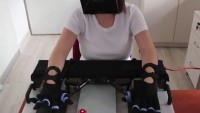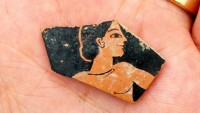UCLA Researchers Using Smartphones to Combat Antimicrobial Resistance
| Arthur Dominic Villasanta | | Dec 15, 2016 11:20 PM EST |
(Photo : FDA) Antibiotic resistance testing.
A team of UCLA researchers has developed an automated diagnostic test reader for antimicrobial resistance (AMR) that makes use of the ubiquitous smartphone.
The simple and inexpensive attachment could lead to routine testing for antimicrobial susceptibility in areas with limited resources.
Like Us on Facebook
Antimicrobial resistant bacteria are a severe threat to global public health. They're more prevalent in bacterial pathogens responsible for high-mortality diseases such as pneumonia, diarrhea and sepsis.
Part of the challenge in combating the spread of these organisms has been the limited ability to conduct antimicrobial susceptibility testing in regions that don't have access to labs, testing equipment and trained diagnostic technicians to read these tests.
In response to this failing, UCLA researchers developed a simple and inexpensive smartphone attachment that can conduct automated antimicrobial susceptibility testing.
"This work is extremely important and timely, given that drug-resistant bacteria are increasingly becoming a global threat rendering many of our first-line antibiotics ineffective," said Aydogan Ozcan, Chancellor's Professor of Electrical Engineering and Bioengineering at the UCLA Henry Samueli School of Engineering and Applied Science.
"Our new smartphone-based technology can help put laboratory-quality testing into much wider adoption, especially in resource-limited regions."
This collaborative interdisciplinary project involved the UCLA research labs of three professors: Ozcan; Omai Garner, an assistant professor of pathology and laboratory medicine in Health Sciences and Dino Di Carlo, a professor of bioengineering in Engineering.
The UCLA device connects to a smartphone and has a plate that can hold up to 96 wells for testing. An array of LEDs illuminates the sample. The phone's camera is used to sense small changes in light transmission of each well containing a different dose selected from a panel of antibiotics.
Images are sent to a server that automatically performs antimicrobial susceptibility testing. Results are returned to the smartphone in about one minute.
Researchers then tested the device in clinical settings at UCLA. They used special plates prepared with 17 different antibiotics targeting Klebsiella pneumoniae, a bacteria containing highly resistant antimicrobial profiles.
They used 78 samples from patients during the clinical tests. Their results showed the smartphone-based reader meets FDA-defined criteria for laboratory testing, with a detection accuracy of 98.2 percent.
"This mobile reader could eliminate the need for trained diagnosticians to perform antimicrobial susceptibility testing, reduce the cost barrier for routine testing, and assist in tracking of bacterial resistance globally," said Garner.
Di Carlo said an "additional advantage of this technology is the possibility of examining bacterial growth in the presence of a drug at an earlier time point than is currently read, (about 24 hours). This could allow for a more rapid turnaround time of the results to the physician, which might help save lives."
The research results were published in the journal Scientific Reports, part of the Nature Publishing Group.
TagsUCLA, Smartphone, antimicrobial resistance, AMR, Aydogan Ozcan, Klebsiella pneumoniae
©2015 Chinatopix All rights reserved. Do not reproduce without permission
EDITOR'S PICKS
-

Did the Trump administration just announce plans for a trade war with ‘hostile’ China and Russia?
-

US Senate passes Taiwan travel bill slammed by China
-

As Yan Sihong’s family grieves, here are other Chinese students who went missing abroad. Some have never been found
-

Beijing blasts Western critics who ‘smear China’ with the term sharp power
-

China Envoy Seeks to Defuse Tensions With U.S. as a Trade War Brews
-

Singapore's Deputy PM Provides Bitcoin Vote of Confidence Amid China's Blanket Bans
-

China warns investors over risks in overseas virtual currency trading
-

Chinese government most trustworthy: survey
-

Kashima Antlers On Course For Back-To-Back Titles
MOST POPULAR
LATEST NEWS
Zhou Yongkang: China's Former Security Chief Sentenced to Life in Prison

China's former Chief of the Ministry of Public Security, Zhou Yongkang, has been given a life sentence after he was found guilty of abusing his office, bribery and deliberately ... Full Article
TRENDING STORY

China Pork Prices Expected to Stabilize As The Supplies Recover

Elephone P9000 Smartphone is now on Sale on Amazon India

There's a Big Chance Cliffhangers Won't Still Be Resolved When Grey's Anatomy Season 13 Returns

Supreme Court Ruled on Samsung vs Apple Dispute for Patent Infringement

Microsoft Surface Pro 5 Rumors and Release Date: What is the Latest?













